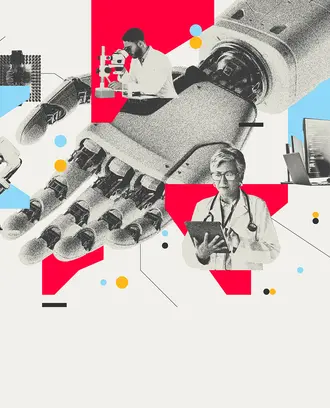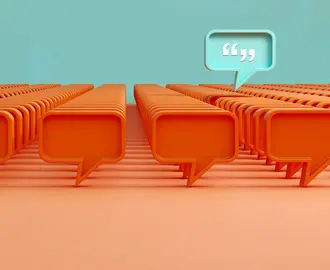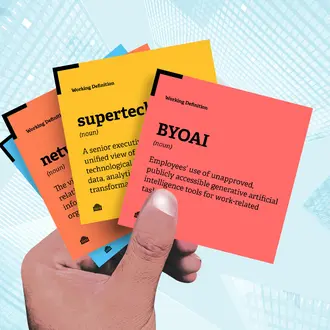Credit: Mimi Phan / JoZtar / iStock
In today’s world of rapid, nonstop technological change, imagination is key. Leaders need to adopt a change mindset in order to absorb knowledge and deploy it strategically.
The ability to engage in nuanced decision-making can help humans stay employable as artificial intelligence and machine learning continue to ascend, according to Vanessa Tanicien, director of client success at LifeLabs Learning, a management training consultancy.
At the recent EmTech Next conference, sponsored by MIT Technology Review, Tanicien said we’ve left the knowledge era, which valued the linear acquisition of expertise, and moved into an era of efficient, continuous, rapid learning, where hyperadaptability is key.
Essential to the process are the skills of extraction and transfer, Tanicien said. Here’s her advice on how to excel at both.
Extraction
“Extraction” refers to applying learning to diverse situations to understand causes, events, and results. It means pausing for (and normalizing) feedback and reflecting on it rather than just memorizing new information or forming new habits.
In this process, many people first rely on single-loop learning: They reflect on an event and its result and then determine a better solution for the future. Double-loop learning goes a step further, Tanicien explained: It requires reflection on root causes, events, and results to identify and address systemic problems.
Related Articles
“Double-loop learning is understanding how to deal with the problem at hand but also circumventing that problem in the first place,” Tanicien said. “Learning on the job doesn’t help us learn enough. We need to take the time to extract, [and] more extraction is better than [just] practicing something consistently.”
Next, good leaders ask questions of their team members: What did we learn? How can we apply it elsewhere?
“So often, we’re moving fast and trying to be efficient. But if we’re not taking the moment to talk about what worked, what didn’t work, what can be improved in the future, there’s a [missed] opportunity,” Tanicien said.
Good leaders also welcome feedback. Otherwise, when debriefing conversations do happen, it will be through back channels, and lessons will be lost along the way.
“Folks tend to skirt conflict in retrospective situations. They get uncomfortable. So inviting it in a productive manner makes a big difference: ‘What do you think caused this project to go off the rails? What do we need to do differently in the future? What were some of the missteps that we had in project planning?’” Tanicien said. “Fostering a healthy conflict culture is also a piece of the extraction conversation.”
Transfer
Learning doesn’t last unless leaders transfer knowledge from short-term memory to long-term memory, Tanicien said. They can do this by taking three steps:
- Link. Think about what the learning reminds you of. “We want to link the new lesson to something else in our lives. Transdisciplinary thinking is really powerful, and it allows for innovation,” Tanicien said.
- Repeat. Frequency is key, she noted: “We need to hear something between 20 and 26 times before it actually lands with us.”
- Teach. Share your knowledge with others. “Teaching is one of the ways for us to really deepen our understanding, as well as increase our perception of competence among others,” she said.
Tanicien offered three techniques for applying new learning to various situations:
- Analogize. “As leaders, we often have to have conversations with folks, and if we’re able to make metaphors and analogies ... that get people to understand what we mean, we have effectively transferred that knowledge,” Tanicien said.
- Demarcate. Get specific about the skills you want to apply by “really understanding what situation you’re in and then naming the lesson that you’d like to apply there,” she advised.
- Behaviorize. “How can we break down a learning into the discrete elements of that behavior or lesson and apply it consistently over and over again?” Tanicien said.
And take heart: As generative AI, machine learning, and automation explode, there’s still value in human decision-making.
“Machines are going to do a lot for us in the future, but one of the things that they will not be able to do are some of those human-flavored skills,” Tanicien said. “Take the time to really double down on learning, because that’s what is going to keep us different [from] the machines.”
Read next: 3 traits of a winning management system



